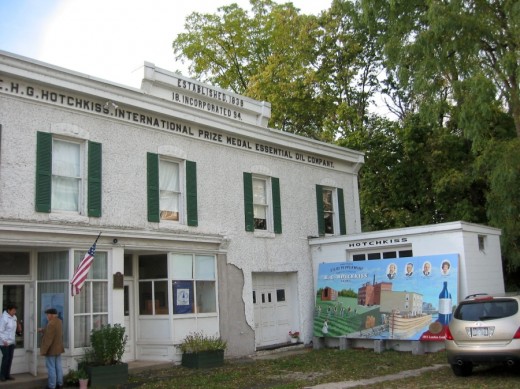Read the start of this article below; to view full article you need to be a PlannersWeb member. Already a member? — be sure you’re logged-in. Not a member? Consider joining the PlannersWeb.
Since history, historic resources, and historic preservation are generally not subjects most people think about very much, these next few posts will provide an introduction and help stimulate your thinking and curiosity.
I’d like to start by asking you to give some thought to the things that make your community unique. Because such things are not always easy to identify, I’d like you to think for a moment about the Declaration of Independence and try to envision it.

What comes to mind first? If you’re like many people, including me, you’ll probably think about John Hancock’s signature, prominently centered below the main text. Immediately recognizable, it is big, bold, and distinctive, demanding attention among the signatures of his numerous eminent colleagues.
Like human beings, communities also have unique “signatures” or what I’ve come to think of as “signature elements.” While it’s not always as immediately evident as John Hancock’s signature is on the Declaration, a community’s signature is rooted in its unique history, people, arts, architecture, heritage, natural resources, culture, commerce, agriculture, industry, and institutions. The endlessly varying combinations of these diverse elements mean that no two places are exactly alike.
Signature elements therefore help differentiate communities from one another and can be a continuous source of pride, inspiration and creativity. Like abundant water or electrical power, coal, timber or iron, they are a form of raw material and often serve as building blocks which communities can use to tell their stories, stimulate revitalization and growth and promote themselves to potential residents, visitors, and investors.
Communities use their signature elements in a variety of ways. For example:
 Lyons, New York has based its main street revitalization efforts on its connection with New York State’s Erie Canal system and the H.G. Hotchkiss International Prize Medal Essential Oil Company, which produced peppermint and other essential oils and brought global attention to the village for many years.
Lyons, New York has based its main street revitalization efforts on its connection with New York State’s Erie Canal system and the H.G. Hotchkiss International Prize Medal Essential Oil Company, which produced peppermint and other essential oils and brought global attention to the village for many years.

Lyons calls itself “the Peppermint Village,” celebrates all things peppermint in a variety of themed events, and tells its canal story in a series of highly descriptive murals and interpretive signs throughout downtown.
You must be logged in or a PlannersWeb member to read the rest of the article.
